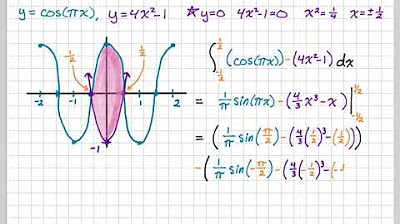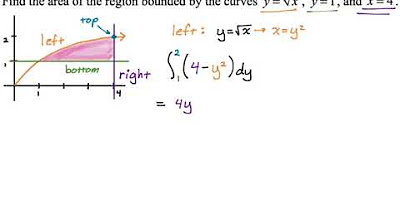so you want a HARD integral from the Berkeley Math Tournament
TLDRThis video explains how to solve an integral problem from the 2020 Berkeley Math Tournament using Feynman's technique, also known as differentiation under the integral sign. The problem involves integrating x/tan(x) from 0 to π/2, which is challenging due to the non-elementary nature of the integral. The instructor demonstrates the step-by-step process, including differentiating with respect to a parameter and integrating back to find the solution. This technique simplifies the problem and ultimately leads to the result of π/2 * ln(2). The video encourages viewers to try the problem themselves and highlights the importance of understanding such advanced calculus methods.
Takeaways
- 🔢 The integral to be solved is ∫(x/tan(x)) dx from 0 to π/2, using Feynman's technique.
- 📝 This problem is from the Berkeley Math Tournament 2020 and is considered very challenging.
- 💡 The integral x/tan(x) is not elementary and should be approached using differentiation under the integral sign.
- 📐 The process involves introducing a parameter 'a' and differentiating the integral with respect to 'a'.
- 📊 Step 1 is to define an integral function I(a) and differentiate it with respect to 'a'.
- 📚 Step 2 is to integrate the result from step 1 with respect to 'a' to find I(a).
- 🔍 Step 3 involves evaluating I(1) to get the final answer.
- 🧩 The key technique used is changing the order of differentiation and integration.
- 🖊 A substitution is made with u = tan(x) to simplify the integral.
- 🏆 The final solution is π/2 * ln(2), and the process involves several substitutions and simplifications.
Q & A
What is the integral that the speaker is attempting to solve?
-The integral to solve is the integral of x/tan(x) from 0 to pi/2.
Why is the integral described as improper?
-The integral is described as improper because it involves limits that approach infinity or involve an undefined point, specifically at x = pi/2.
What technique does the speaker use to solve the integral?
-The speaker uses Feynman's technique, also known as differentiation under the integral sign.
Why is direct integration of x/tan(x) not considered elementary?
-Direct integration of x/tan(x) is not elementary because it involves functions that do not simplify easily through basic integration techniques.
What substitution does the speaker initially suggest for x?
-The speaker suggests rewriting x as the inverse tangent of tangent(x) to produce a tangent(x) term on the numerator.
What is the purpose of introducing a new variable 'a'?
-The variable 'a' is introduced to parameterize the problem, making it easier to differentiate and later integrate with respect to 'a'.
How does differentiating under the integral sign help in solving the problem?
-Differentiating under the integral sign transforms the problem into a form where integration becomes manageable, allowing the variable 'a' to simplify the integral.
What is the final result of the differentiated integral with respect to 'a'?
-The final result of the differentiated integral with respect to 'a' is pi/2 times 1/(a + 1).
How does the speaker solve for the constant 'C' in the integration process?
-The speaker sets a = 0 in the integral, resulting in a value of 0 for the integral, which allows solving for the constant 'C' as 0.
What is the final solution to the integral x/tan(x) from 0 to pi/2?
-The final solution to the integral of x/tan(x) from 0 to pi/2 is (pi/2) * ln(2).
Outlines
📚 Introduction to Feynman's Trick for Integration
The script begins with an introduction to a complex calculus problem from the 2020 Berkeley Math Tournament, which involves integrating x/tan(x) from 0 to pi/2 using Feynman's technique. The host encourages viewers to attempt the problem before revealing the solution, noting the integral's difficulty and its non-elementary nature. The video aims to guide viewers through the process of tackling this improper integral, which surprisingly converges, and to illustrate the application of differentiation under the integral sign.
🔍 Setting Up the Integral with Feynman's Trick
The second paragraph delves into the setup for applying Feynman's trick. The host introduces a new variable 'a' and rewrites the integral in terms of this parameter, aiming to differentiate with respect to 'a' to simplify the expression. The explanation involves differentiating the integral function I(a), which represents the integral from 0 to pi/2 of (arctan(a) * tan(x) / tan(x)) dx, and preparing for the next steps which include integrating back with respect to 'a' to find I(a) and ultimately the value of the original integral when a=1.
📝 Executing Differentiation Under the Integral Sign
In this segment, the host carries out the differentiation under the integral sign with respect to 'a'. The process involves differentiating the integrand, which includes arctan(a) and tan(x), and applying the chain rule. The differentiation leads to a cancellation of terms, resulting in a simplified integral involving 1/(1 + a*tan(x)). The host then proceeds to further simplify the integral by introducing secant squared x, setting the stage for a u-substitution to make the integral more manageable.
🧩 Completing the Integration with U-Substitution
The fourth paragraph focuses on completing the integration using u-substitution. The host sets u equal to tan(x) and transforms the integral into one involving secant squared x, which simplifies the expression significantly. The limits of integration are also adjusted to reflect the change from x to u. The resulting integral is then broken down into two parts, each of which can be integrated separately, leading to an expression involving inverse tangent functions.
🎯 Finding the Original Integral's Value
The final paragraph wraps up the solution by integrating the expression obtained from the previous steps with respect to 'a' and solving for the constant of integration 'c'. The host uses the condition i(0) = 0 to find that 'c' equals zero. The original integral's value is then expressed in terms of 'a', and by substituting a=1, the final answer for the integral from 0 to pi/2 of x/tan(x) is pi/2 * ln(2). The video concludes with an invitation to the Berkeley Math Tournament and information for potential participants and sponsors.
Mindmap
Keywords
💡Feynman's technique
💡improper integral
💡Berkeley Math Tournament
💡inverse tangent (arctan)
💡differentiation under the integral sign
💡parameter
💡chain rule
💡u-substitution
💡partial fractions
💡integration limits
Highlights
Feynman's technique is introduced to integrate x/tan(x) from 0 to pi/2.
The integral is from a challenging problem in the 2020 Berkeley Math Tournament.
The integral is improper but converges, and direct integration of x/tan(x) is not elementary.
A creative approach is suggested by writing ds as the inverse tangent of tan(x).
Differentiation under the integral sign, or parameter translation, is explained as the method to tackle the problem.
The process involves considering the integral as a function of a new variable 'a'.
Differentiating the integral with respect to 'a' is the first step in the solution.
After differentiation, the integral becomes easier to solve due to the cancellation of terms.
The integral is transformed to involve secant squared x to prepare for u-substitution.
U-substitution is used with u = tan(x) to simplify the integral.
Partial fraction decomposition is applied to the integral.
Integration from 0 to infinity is discussed as a method to find the integral's value.
The importance of considering the limits and behavior of the integral at infinity is highlighted.
The final result of the integral is expressed in terms of 'a' and involves a natural logarithm.
The constant of integration 'c' is determined by setting 'a' to 0.
The integral's answer when 'a' is 1 is calculated to be pi/2 ln(2).
An invitation to the Berkeley Math Tournament on November 5th, 2022, is extended with details about scholarships.
Transcripts
Browse More Related Video

Berkeley Math Tournament calculus tiebreaker

Feynman's technique is the greatest integration method of all time

Area Between Curves: y = cos(pi*x), y = 4x^2 -1

Area Between Curves: Integrating with Respect to y (Example 3)

Finding a Horizontal Line (y=k) to Divide a Region into Two Equal Parts Using Calculus

2023 AP Calculus BC FRQ #5
5.0 / 5 (0 votes)
Thanks for rating: